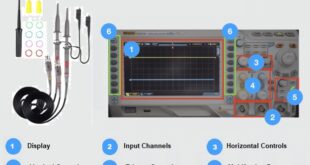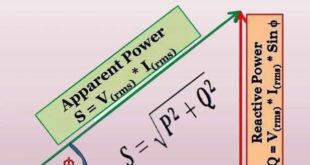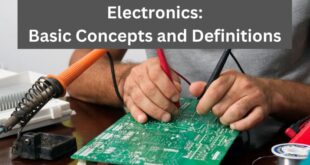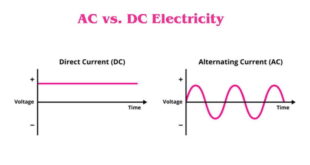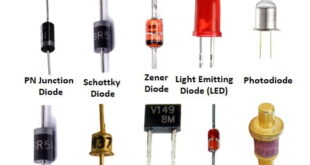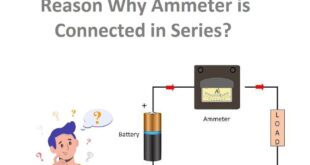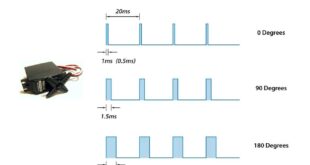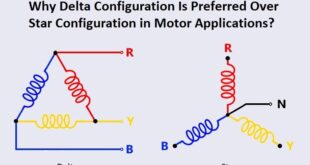Answer: Yes, ground typically refers to a reference point with zero voltage. Reasoning: In electrical engineering, ground is often used as a reference point for voltage measurements. It’s conventionally assumed to have zero voltage because it’s connected to the Earth, which acts as a large reservoir of charge. By connecting …
Read More »How To Tell If A Circuit Breaker Is Bad?
How To Tell If A Circuit Breaker Is Bad? Introduction: In any electrical system, circuit breakers serve as crucial guardians, protecting circuits from overloads and potential hazards. However, like any component, they can degrade over time, potentially leading to malfunction. As electrical support engineers, it’s essential to discern the signs …
Read More »What is the difference between MCB, MCCB, ELCB and RCCB?
Differences Between MCB, MCCB, ELCB, and RCCB Introduction: In the realm of electrical engineering and circuit protection, the acronyms MCB, MCCB, ELCB, and RCCB often arise. Understanding the distinctions between these devices is crucial for ensuring the safety and efficiency of electrical systems. In this article, we’ll delve into the …
Read More »Efficient Voltage Control Strategies for Modern Power Systems
Efficient Voltage Control Strategies for Modern Power Systems Introduction Voltage control is a crucial aspect of power system operation and stability. In a power system, maintaining the voltage within a specified range is essential for ensuring efficient power delivery and preventing damage to equipment. Voltage control becomes even more critical …
Read More »Oscilloscope Guide
Oscilloscope Guide Introduction Definition and purpose of an oscilloscope An oscilloscope, often referred to as an “scope” or “o-scope,” is an electronic test instrument used to visualize and analyze electrical waveforms. It displays voltage signals in the time domain, allowing engineers and technicians to observe the characteristics of various electronic …
Read More »Electrical Power – Its Types and Units
Electrical Power – Its Types and Units Introduction Electrical power is a fundamental concept that plays a pivotal role in modern society. From lighting our homes to powering vast industries, electrical power has become an indispensable part of our daily lives. In this article, we will explore what electrical power …
Read More »Electrical Distribution Substation
Electrical Distribution Substation: The Nerve Center of Power Delivery In the intricate web of electrical infrastructure, distribution substations play a pivotal role, serving as the critical juncture where high-voltage electricity is transformed and distributed to end-users at manageable voltages. These often inconspicuous yet indispensable facilities are the backbone of modern …
Read More »Basic Concepts and Definitions of Electronics
Understanding Basic Concepts and Definitions of Electronics Introduction Electrical and electronics engineering is a fascinating field that powers the technology-driven world we live in. In this introductory chapter, we will explore some fundamental concepts that serve as the building blocks for understanding and working with electricity and electronics. Understanding these …
Read More »Electronic Components: Building Blocks of Modern Electronics
Electronic Components: Building Blocks of Modern Electronics Introduction In our increasingly digital and interconnected world, electronic components are the unsung heroes that power the devices we rely on every day. From the small resistor that regulates current to the complex integrated circuits that serve as the brains of our gadgets, …
Read More »Circuit Theory
Circuit Theory: Unraveling the Foundations of Electronics Introduction In the world of electronics and electrical engineering, understanding circuits is like grasping the alphabet before diving into reading and writing. Circuits are the fundamental building blocks of all electronic devices and systems. Circuit theory is the key that unlocks the fascinating …
Read More »Types of Electricity: AC vs. DC
Types of Electricity: AC vs. DC Electricity comes in various types, and one common way to categorize it is based on the flow of electric charge. The two primary types of electricity are Alternating Current (AC) and Direct Current (DC). Let’s explore the characteristics and applications of each: 1. Alternating …
Read More »Diodes and Its Types
Diodes and Its Types Introduction Diodes are essential semiconductor devices that play a crucial role in modern electronics. They are widely used in various applications, ranging from power rectification to signal modulation. This article will explore the concept of diodes, their working principles, and the different types of diodes available …
Read More »Resistors and Their Types
Resistors and Their Types Introduction In the world of electronics, resistors play a crucial role as passive components that control the flow of electric current. These unassuming components are fundamental to circuit design, enabling engineers and hobbyists to regulate voltage levels, limit current flow, and perform various signal conditioning tasks. …
Read More »Why Voltmeter is Always Connected in Parallel?
Why Voltmeter is Always Connected in Parallel? Introduction In the realm of electrical measurements, voltmeters are indispensable tools used to measure voltage across various components in circuits. Whether you’re a seasoned electrician, an engineering enthusiast, or simply curious about electrical instruments, understanding why voltmeters are always connected in parallel is …
Read More »Why ammeter is connected in series?
Why ammeter is connected in series? Introduction In the world of electrical circuits and measurements, the ammeter holds a crucial position as an indispensable tool. An ammeter, short for “ampere meter,” is an instrument designed to measure the flow of electric current in a circuit. It provides valuable insights into …
Read More »Why is transmission line 11KV OR 33KV, 66KV not in 10KV, 20KV, or 30KV?
Answer: Transmission line voltages like 11kV, 33kV, and 66kV are standard designations based on practical considerations, system requirements, and historical conventions. These values optimize efficiency, cost, and technical feasibility. Reasoning: System Compatibility: Standardizing transmission voltages promotes system compatibility, facilitating the interconnected operation of power grids and ensuring efficient energy transfer. …
Read More »What is the output signal from a servo motor controller?
Answer: The output signal from a servo motor controller is a pulse-width modulation (PWM) signal. This signal consists of a series of pulses with varying widths, where the width of each pulse corresponds to the desired position of the servo motor’s output shaft. The servo motor interprets these pulses and …
Read More »Why transformer is not used in DC?
Answer: Transformers are not used in direct current (DC) systems because they rely on the principle of electromagnetic induction, which requires a changing magnetic field to induce voltage and current in the secondary winding. In a DC system, the current flows in a constant direction, creating a steady magnetic field …
Read More »Why DC current is used to charge batteries, not AC?
Answer: DC current is used to charge batteries because batteries are designed to store direct current (DC) energy. Charging them with alternating current (AC) would require additional components like rectifiers, making the process more complex and less efficient. Reason: DC (direct current) is preferred for charging batteries due to its …
Read More »Why Delta Configuration Is Preferred Over Star Configuration in Motor Applications?
Answer: In Star vs. Delta: Delta configuration is preferred over star configuration in motor applications due to its ability to provide higher starting torque, reduced voltage drop, simplified control, reduced current imbalance, space and weight considerations, potential cost efficiency, and suitability for induction motors requiring higher starting torque. Reasoning: Delta …
Read More » Electrical Engineering World Wiring a Brighter Tomorrow!
Electrical Engineering World Wiring a Brighter Tomorrow!




